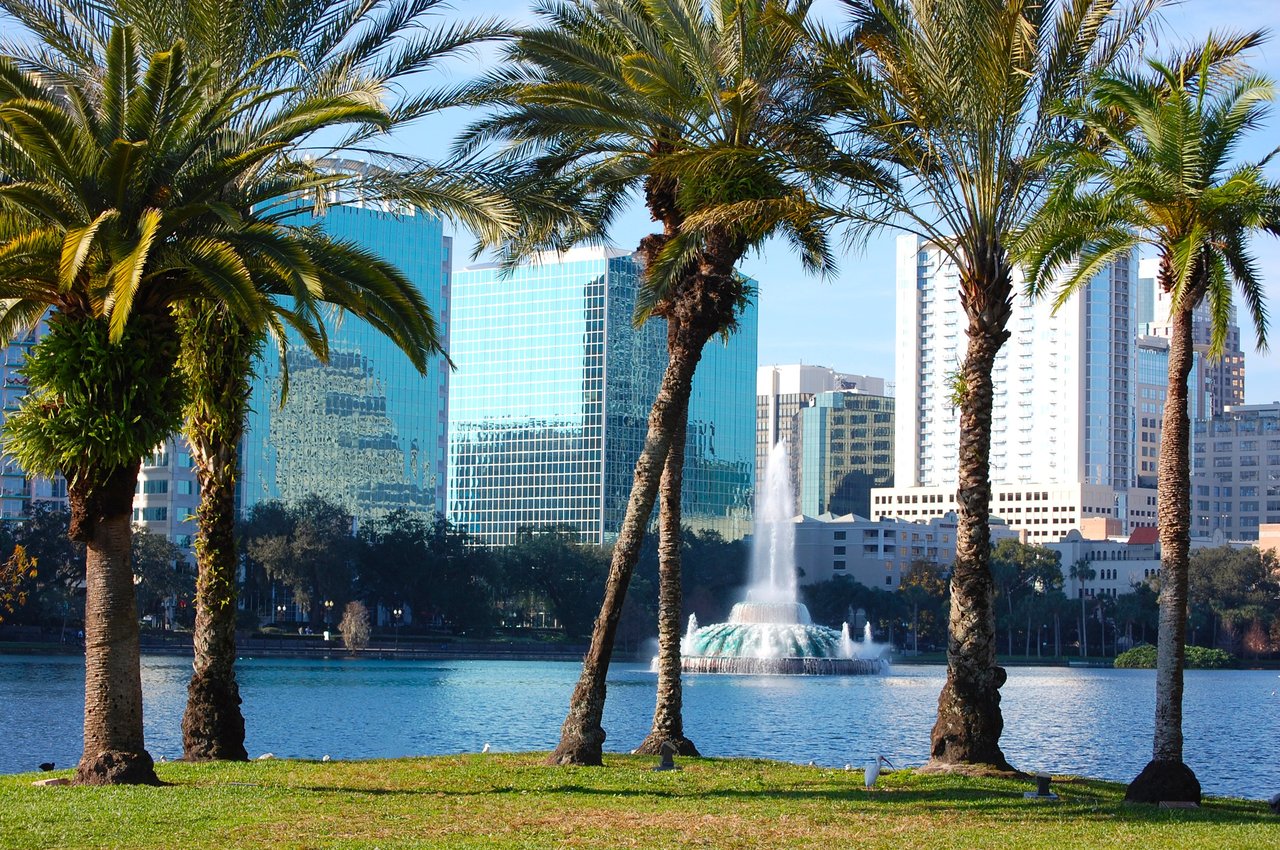
Orlando
From tourism hub to relocation destination

From tourism hub to relocation destination
Orlando has come a long way since its days as a cattle and citrus town. And despite what some may think, this city of 334,000 is more than just a home base for theme parks. Orlando became a true city in the 1960s when NASA built a complex at nearby Cape Canaveral. Walt Disney World came next, opening its gates in 1971 and giving birth to a tourism and hospitality scene that remains the city’s top industry.
But the city has continued to evolve. Today Orlando is the headquarters of large healthcare systems Orlando Health and AdventHealth as well as multiple advanced medical research facilities like the University of Central Florida (UCF) Lake Nona Cancer Center and the AdventHealth Nicholson Center, which trains more than 15,000 surgeons a year. It’s also a growing tech hub, with more Fortune 500 companies setting up locations and drawing employees from all over.
Part of the Orlando-Kissimmee-Sanford metro area, the city sits in the center of Orange County, home to about 1.4 million people. Its growth has sprawled to the surrounding suburbs including Dr. Phillips , Altamonte Springs, Lake Nona and Winter Park, which draws residents who want access to Orlando amenities with less congestion.
Orlando was a common relocation spot for out-of-state buyers before the COVID-19 pandemic, but that event supercharged the real estate market in Central Florida as new residents moved from pricier markets in the Northeast, the West Coast and South Florida. Homes in Orlando range from tiny bungalows for just under $100,000 to spacious estates for $8 million. The majority, however, are three- and four-bedroom mid century-era and 2000s-era New Traditional homes sitting on landscaped lawns and sidewalk-lined streets. Buyers can find established homes in Baldwin Park , while College Park offers residences with a wide range of build dates.
The median price for single-family homes is $450,000. Once considered a bargain for real estate, Orlando has seen a change. We’re not a cheap market to live in anymore, but we’re still desired. “There’s still not enough inventory.” Homebuilders are busy adding houses to the market, starting construction of more than 25,000 housing units in the metro area in 2023, the ninth-highest tally in the nation, per census data.
Townhouses and condos are also available throughout the city, including communities such as Park Central , MetroWest and South Semoran . Many condos can be found in tony high-rise complexes near shopping and dining. Townhouses are also often located near Orlando’s action, with modern exteriors and two-car garages. Orlando Regional Realtor Association data shows Orange County’s top-selling communities are suburbs outside Orlando’s boundaries: Winter Garden, Windermere and Apopka. “People are moving out of the urban core”. “They want to see if they can get more for their money.”
1,059,820 people live in Orlando, where the median age is 36.2 and the average individual income is $37,020.037. Data provided by the U.S. Census Bureau.
Total Population
Median Age
Population Density Population Density This is the number of people per square mile in a neighborhood.
Average individual Income
There's plenty to do around Orlando, including shopping, dining, nightlife, parks, and more. Data provided by Walk Score and Yelp.
Explore popular things to do in the area, including Styles Of Life, and Kenya Enhancing Beauty.
| Name | Category | Distance | Reviews |
Ratings by
Yelp
|
|---|---|---|---|---|
| Beauty | 0.18 miles | 5 reviews | 5/5 stars | |
| Beauty | 4.47 miles | 5 reviews | 5/5 stars | |
|
|
||||
|
|
||||
|
|
||||
|
|
||||
|
|
||||
|
|
Orlando has 379,447 households, with an average household size of 85.44. Data provided by the U.S. Census Bureau. Here’s what the people living in Orlando do for work — and how long it takes them to get there. Data provided by the U.S. Census Bureau. 1,059,820 people call Orlando home. The population density is 3,690.395 and the largest age group is Data provided by the U.S. Census Bureau.
Total Population
Population Density Population Density This is the number of people per square mile in a neighborhood.
Median Age
Men vs Women
Population by Age Group
0-9 Years
10-17 Years
18-24 Years
25-64 Years
65-74 Years
75+ Years
Education Level
Total Households
Average Household Size
Average individual Income
Households with Children
With Children:
Without Children:
Marital Status
Blue vs White Collar Workers
Blue Collar:
White Collar:
Whether you're buying, selling, or investing, he’s ready to guide you every step of the way—with integrity, care, and a deep commitment to your goals.